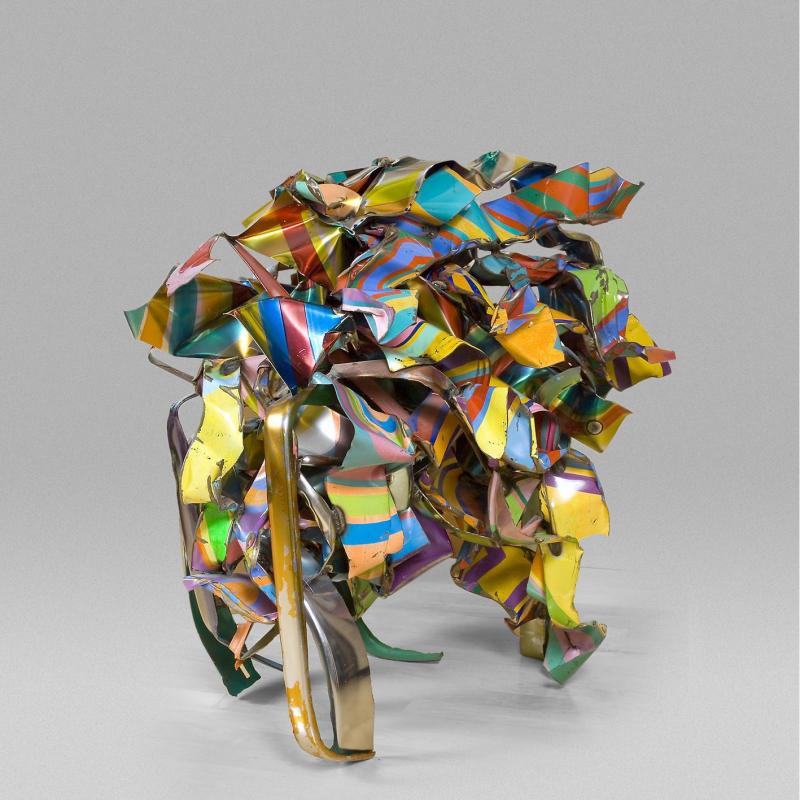A New Show at Gagosian Gallery Presents Works by John Chamberlain and Jean Prouvé
On February 27, 2015, an unprecedented exhibition will open at the Gagosian Gallery in New York. Organized in partnership with Paris’ Galerie Patrick Seguin, the show will feature sculptures by the American artist John Chamberlain in visual conversation with two prefabricated houses by the French designer and architect, Jean Prouvé. According to a press release from the Gagosian Gallery, both men were “twentieth century innovators who harnessed the strength and suppleness of metal to new potential in their respective fields.”
Since its opening in 1989, Galerie Patrick Seguin has collected demountable houses by Prouvé -- one of the most influential designers of the modern era. Best-known for his ability to deftly combine elegance with economic viability, Prouvé designed his first demountable house in 1944 in response to an order from the state at the end of World War II. Intended to offer temporary shelter to the homeless in the Lorraine and Franche-Comté regions in Eastern France, Prouvé’s demountable houses were shipped directly to war-ravaged villages, where they could be assembled on-site in a day and by two people. The 6 x 6 meter modules were an economical and adaptable solution to an urgent problem. Prouvé continued to refine and adapt his demountable houses and prefabricated structures throughout his career.
The exhibition at the Gagosian Gallery will present Prouvé’s Ferembal Demountable House (1948), which was designed as the offices of the eponymous tin goods manufacturer. The house is a striking and eloquent example of the technical and functional virtues of Prouvé’s adaptable designs. Prouvé’s asymmetrical Villejuif Demountable House -- the result of a 1956 commission for a schoolhouse featuring a cantilevered wooden roof supported by sheet-steel props -- will also be on view. The structure can easily be dismantled and relocated and is widely considered a milestone in twentieth-century architecture.
Drawing many comparisons to the Abstract Expressionists, Chamberlain began making his dynamic and gestural metal sculptures in the late 1950s. While he experimented with Plexiglas, foam rubber, and aluminum foil, Chamberlain always returned to metal car components as his medium of choice. By twisting, fusing, crumpling, and bending the automobile parts, often painted in vibrant hues, Chamberlain created sculptural forms that concealed the quality of the metal as well as the shape of the original components. What resulted was an entirely new form -- thrilling, organic, and expressive. The exhibition at Gagosian will feature a selection of Chamberlain’s works, ranging from small to monumental in scale.
According to the Gagosian release, “In combination with Chamberlain, the spare elegance of Prouvé’s architecture underscores the eruptions of form and color that Chamberlain’s sculptures achieved with like materials, a striking intersection of groundbreaking functionality and raw creative exuberance.” Chamberlain / Prouvé will remain on view at the Gagosian Gallery through April 4, 2015. An opening reception will be held on March 3, 2015.




























